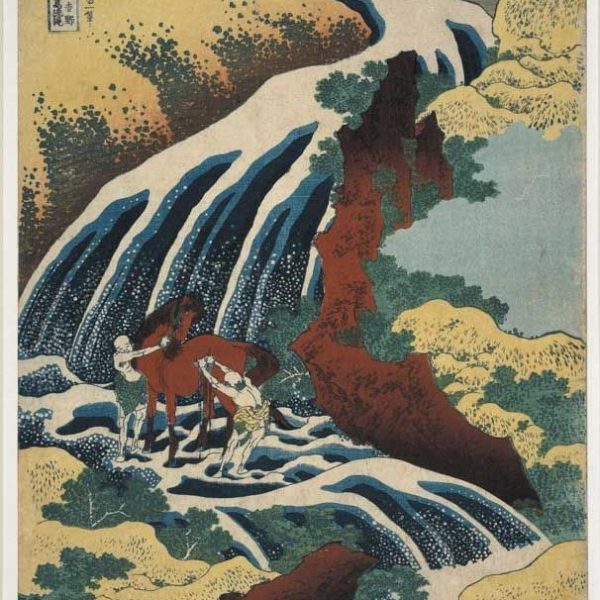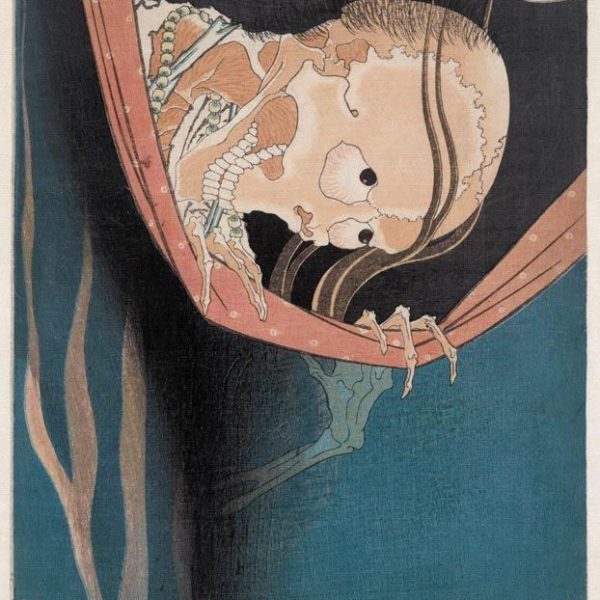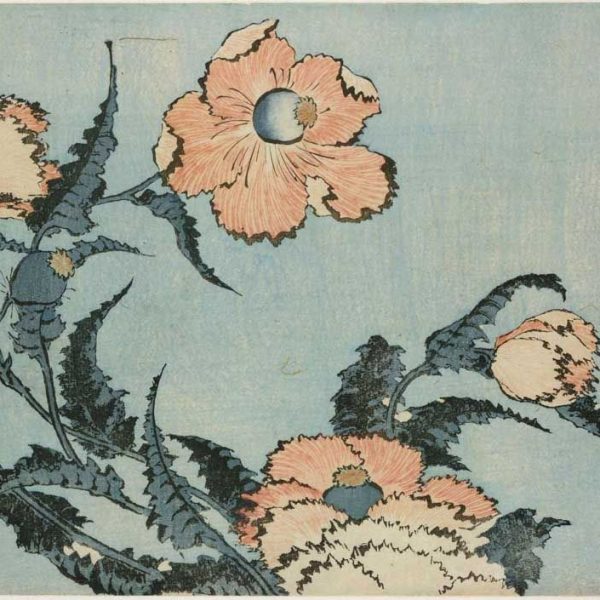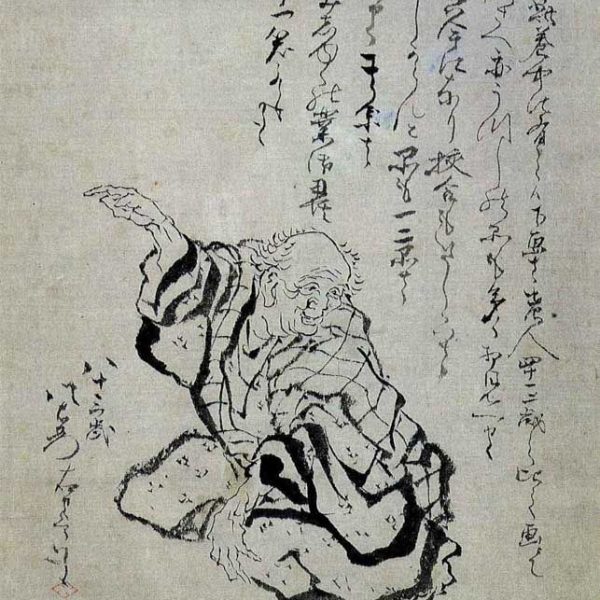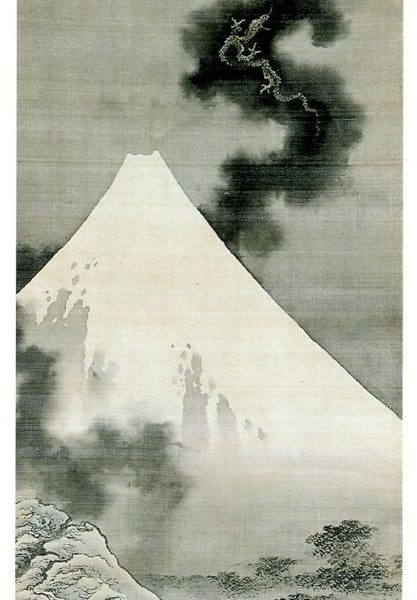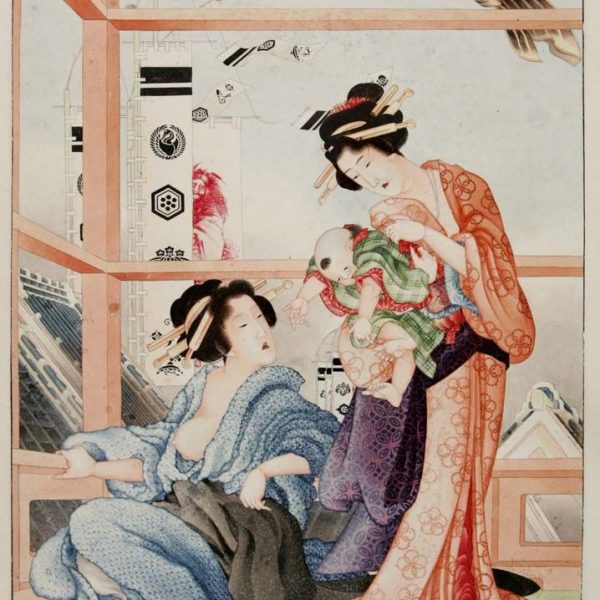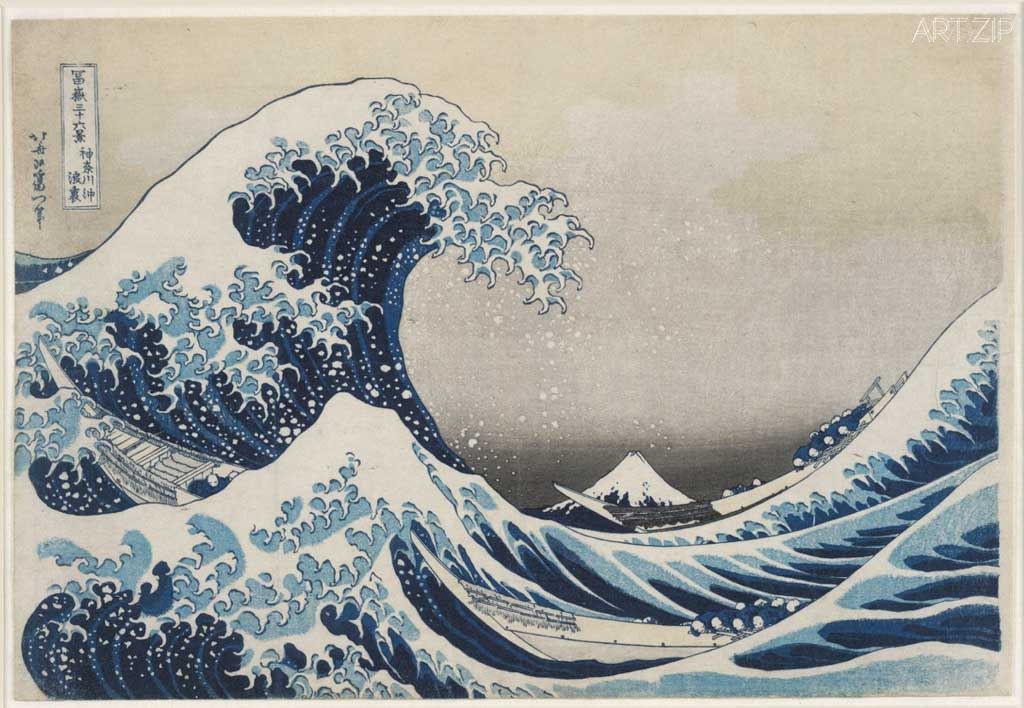
Katsushika Hokusai (1760-1849) has long enjoyed a strong international reputation and is considered by many to be Japan’s greatest artist. In May of 2017 the British Museum has staged the first exhibition in the UK to focus on the later years of the life and art of Hokusai, featuring his iconic print The Great Wave of c. 1831 and continuing to the sublime painted works produced right up to his death at the age of 90. Hokusai: Beyond the Great Wave will provide new insight into the prodigiously productive last thirty years of Hokusai’s life and art from around 1820 to 1849.
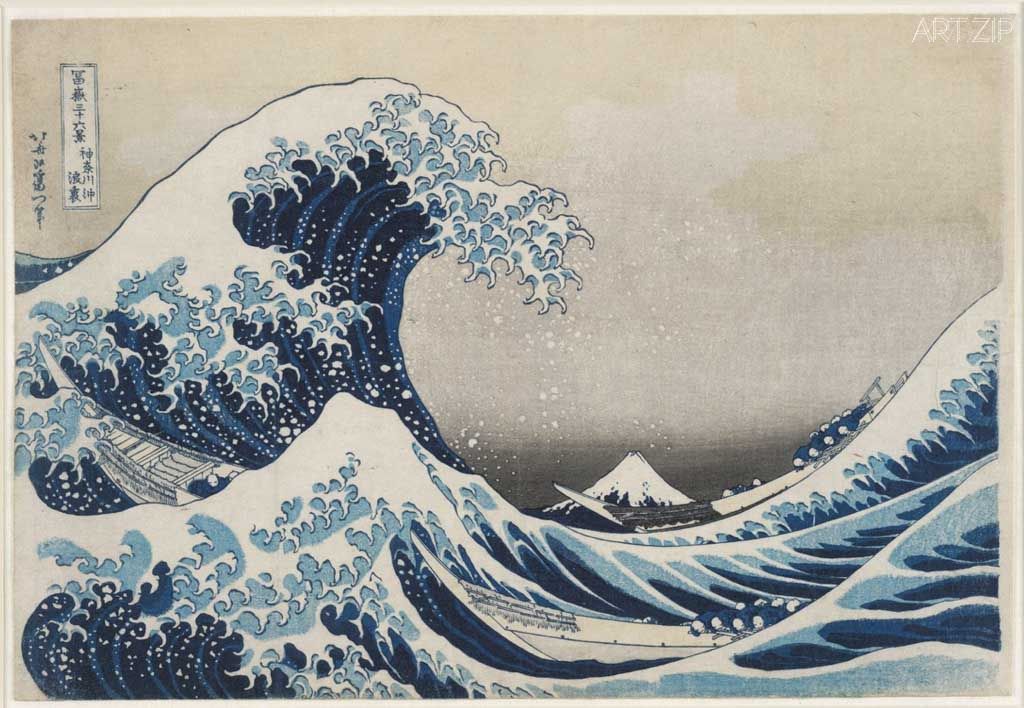
Under the wave off Kanagawa (The Great Wave) from Thirty-six views of Mt Fuji. Colour woodblock, 1831. Acquisition supported by the Art Fund.© The Trustees of the British Museum.
The exhibition will adopt a new approach to explore Hokusai’s later career in thematic as well as chronological terms. The exhibition will shed light on Hokusai’s personal beliefs and his spiritual and artistic quest through major paintings, drawings, woodblock prints and illustrated books. Many have never been seen before in the UK and can only be displayed for a limited length of time. From iconic landscapes and wave pictures to deities and mythological beasts, from flora and fauna to beautiful women, from collaborations with other painters and writers to still lives – the works on show will be extraordinarily varied, with objects drawn from the British Museum’s superb collection and many loans from Japan, Europe and the United States. There will be a rotation of about half the artworks midway through the exhibition run for conservation reasons. Due to their light sensitivity, some works can only be displayed for a limited amount of time, to preserve the vivid colours.
Hokusai’s most iconic print, The Great Wave will be featured, a fine, early impression acquired in 2008 by the British Museum with the assistance of the Art Fund. Hokusai created this world renowned masterpiece when he was about seventy. Mt Fuji and its wider spiritual significance were a model for Hokusai in his quest for immortality during his later years. The print series Thirty-Six Views of Mt Fuji (published around 1831-33) revived Hokusai’s career after personal challenges of the late 1820s. The Great Wave, with its use of deep perspective and imported Prussian blue pigment, reflects how Hokusai adapted and experimented with European artistic style. Also shown will be a rare group of paintings from the National Museum of Ethnology, Leiden, done in a unique European-influenced style, which was commissioned from Hokusai by employees of the Dutch East India Company in about 1824-1826.
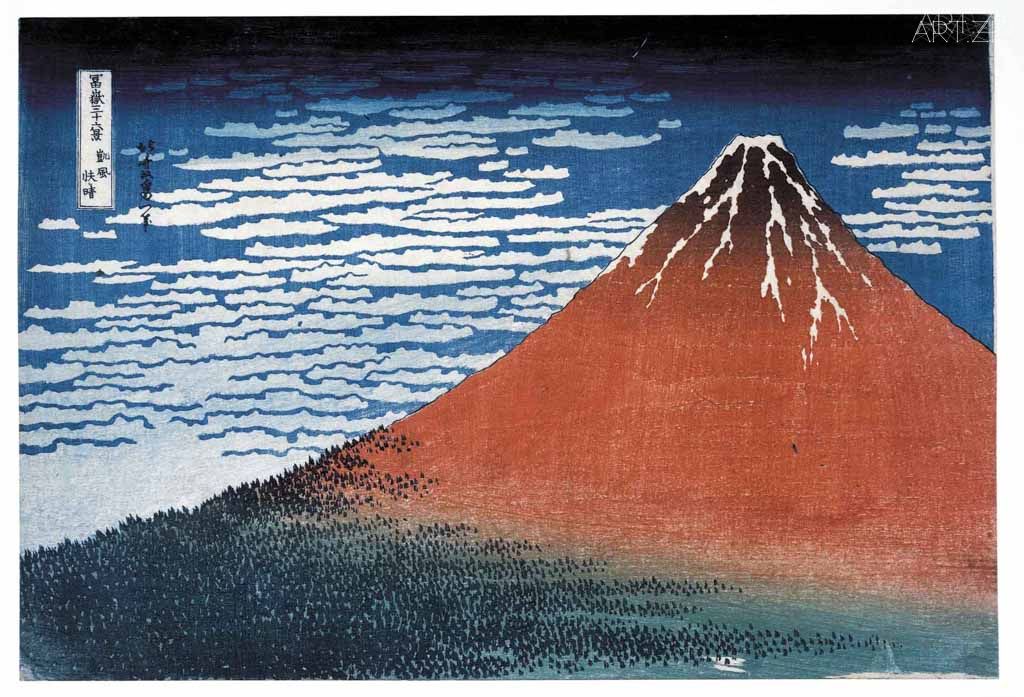
Clear day with a southern breeze (‘Red Fuji’) from Thirty-six Views of Mt Fuji. Colour woodblock, 1831. © The Trustees of the British Museum.
Throughout his career, and particularly in the later years, Hokusai’s paintings brought vividly to life an extraordinary bestiary of dragons, Chinese lions, phoenixes and eagles, and forcefully energised depictions of mythological figures and holy men. He also continued to use landscape and wave imagery as a major subject and he became increasingly interested in exploring in his art the mutability and minutiae of the observable world — particularly birds, animals and plants and other natural subjects. Hokusai based his exploration of the outside world on his subjective identification with his surroundings rather than any objectively ‘scientific’ or technical approach.
For Hokusai and his contemporaries the perceived world could connect seamlessly with a world of powerful ‘unseen’ forces and agencies. Ghosts and vengeful spirits inhabited a closely parallel world that was believed could easy spill into ours. The exhibition will display a magnificent hanging loan from the Metropolitan Museum in New York Red Shōki, the demon-queller, who could protect your home against the scourge of smallpox.
In the late 1820s, Hokusai suffered many personal challenges, including the death of his wife, illness, and financial woes caused by an errant grandson. His daughter Eijo (art name Ōi, about 1800-after 1857), herself an accomplished artist, quit an unsuccessful marriage to return and care for her aged father, and to work with and alongside him. The exhibition will explore their modest living circumstances, displaying their portraits and drawing on the recollections of Hokusai’s pupils. The artist considered that he was passing on ‘divine teachings’ to his pupils, to craft artists and to the world. He published numerous brush drawing manuals, notably Hokusai manga (Hokusai’s Sketches, 15 vols, 1814-1878) which spread his artistic style and reputation widely into society.
葛飾北齋(Katsushika Hokusai,1760年-1849年)被認為是日本最著名且最具影響力的藝術家之一。北齋享年九十歲,在他一生的繪畫生涯中,創作出許多驚人的畫作。“葛飾北齋:巨浪之上 (Hokusai: Beyond the Great Wave)”的展覽自5月25日起至8月13日期間於大英博物馆展出。
本次展覽精選了北齋繪製的壯麗風景畫作、印刷品和北齋漫畫,展示了他生命後半頁的曠世成就。包括日本浮世繪歷史上最負盛名的標誌性作品:《富岳三十六景》系列中的《神奈川衝浪里》。
無論是日常的家庭生活畫面,還是自然界中動植物的恣意盎然,都在北齋的畫作中得到了傳神而精緻的描繪。北齋最大限度的發揮了想象力與創造力,描繪出許許多多真實或是虛構的傳世經典之作。
“90歲時,我不再將情感隱藏起來。百歲之際也許能極神妙的地步。”——葛飾北齋在1834年出版的《富岳百景·初編》後記中如是道。

